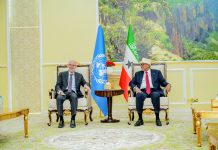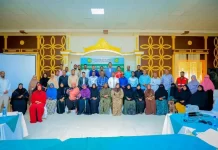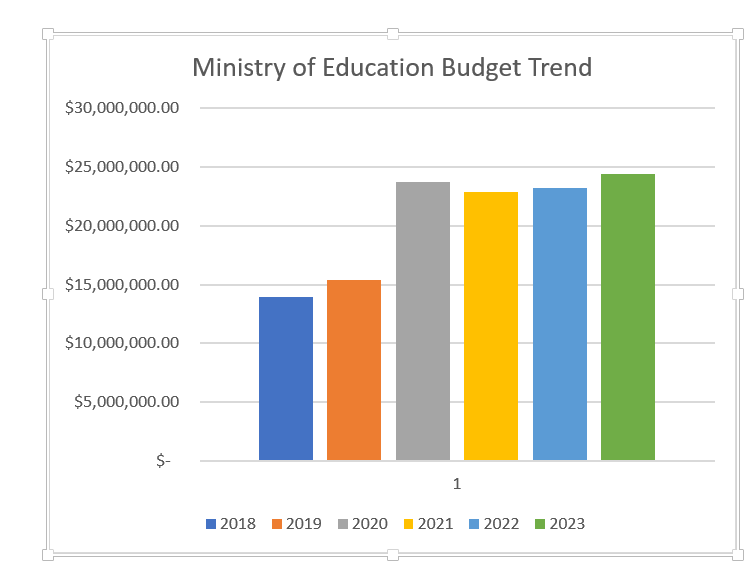Characteristically, before I look at the budget in detail, I must say a word or two about the definition of budget. Budget is a financial plan that states the objectives and goals of a government for a certain period of time; usually a year. In other words, it is the annual economic strategy but there are occasions when planning, instead of helpful, becomes harmful. Budgeting is a difficult and daunting process of estimating both revenue and outlays or expenditures during a specific period. Propounding a balanced budget with strong macro-economic and fiscal policy for a country with no de jure recognitions is prodigy. Lack of participation with the international economic system including the Brent Wood institutions is hampering Somaliland’s economic prospects. A national budget is the financial plan of a country. The government gets money from fees, taxes, and fines, and spends it on its national interests like national defense, security, infrastructure, grants for research, Education, social agendas such as social security and Medicare.
Somaliland Budget [i]2023 is 421.5 million dollars. The Central Government Budget is 298 million—making executive allocation to 71 percent. The parastatal agencies (like Hargeisa Water Agency, National Printing Agency, Central Bank and Berbera Fuel Depot) have 33 million, while the Local governments had a budget of 69 million. Moreover, the development investments such as World Bank projects, Somaliland Development Fund and Joint Programme for Local Governments are 21.5 million.
Local governments [ii]revenue has remarkedly improved from $43 Million to $69 Million for the last couple of years. It is an increase and upsurge of more than 50%. This has led major service delivery improvement.
The Minister of Finance Development presented the 2023 National budget to the House of Representatives in October 2022. Using budget data from the 2023 Financial Year, I will make a number of analyses regarding the budget source of revenues, allocations, mismatches, and budget priorities. This will allow us to understand how the 2023 Government Budget allocations differ from the National Development Plan II which has ended on 2021 and realities on the ground.
The best practice for budget measuring contains no more than the following 8 steps: Pre-budget Statement, Executive Budget Proposal, Enacted Budget, Citizens Budget in year report, mid-year review, year-end reports as well as Auditors Report. However, to the dismay of many citizens hardly five of the above-mentioned items exist; even though those are shrouded with secrecy while public participation has augmented distinctly and with little details and unfortunately at least three of these eight steps does not exist, at all.
The 2023 budget and its format are markedly different from last decade not as format uniquely but substance as well. Under the leadership of the acclaimed economist, the finance ministry has taken baby steps of reform. The ministry produced Macroeconomic and Fiscal framework, Medium-term Budget framework and budget outlook paper. Tax identification numbers has markedly increased from a few hundred to over 30,000. The number of regulatory frameworks has been introduced, to some extent the information management system has been implemented, staff training, and development has been prioritized which further facilitated streamlining data and production of quarterly economic performance bulleting was the icing on the cake. This has facilitated timely production of pertinent and reliable data in a consistent manner.
This budget is 5% higher than the last 2022 budget, with the forecasted 5% to 10% growth for a coming couple of years; 2025 will be historic year for Somaliland, domestic revenue will surpass or to be close to [iii]500 million dollars coupled with the recently completed Berbera port expansion and Ethiopia’s much anticipated and projected to shift certain % of its import handling to be channeled through Berbera port will have a multiplying effect on the revenue. Donor funded projects are 20% unlike Somalia with the direct [iv]budgetary support and donor project funded are approximately 70% its budget.
Despite having a 421.5-million-dollar budget, only 24.5 million has been allocated the paramount portfolio of Education Ministry which is only no more than 8.2% of the overall budget. Currently, we are lowest in terms of Gross enrollment Rate in the region approximately 43% of primary grade 1 Gross Intake Rate while Kenya whose Gross enrollment Rate surpassed 109% in 2015 coupled with 105% completion rate of primary schools with further close to 90% transition rate from Primary to secondary heavily invests Education in 4.4 Billion dollars but our inconsequential allocation for this overriding portfolio is hindering not only the current development endeavors but as well future generations.
From 2018 to 2023 Education Ministry Budget has increased from14 Million to 24.4 Million USD which is 43% upsurge. But it is not adequate, huge investment is required in order to enable the Education Ministry to increase enrollment progressively and steadily. Currently, 8.2% of the 2023 Budget has been allocated but at least 12% to 15% of the budget is required to be directed to paramount and supreme Ministry of education.
The health sector is not in any better shape under the current 2023 budget. For example, 14 million dollars has been allocated a country with the highest child and infant mortality and coupled with the high maternal mortality rate h approximately 396[v] per 100,000 (it is too insignificant such a small amount). Education and Health in total have been allocated 38.5 million dollars which is a fraction of $7.7 dollars per person. Lack of heavy investment for the social services will critically diminish any future economic growth as half of our population lack both basic education opportunities and basic health facilities. A country which is not heavily investing in education and knowledge production will never reach self-sufficiency and its governance will not produce the desired outcomes.
In 20 years from 2000 to 2020: [vi]The global annual number of maternal deaths also fell significantly throughout this period, from 447 000 to 287 000, a decrease of more than a third. We need to come copying strategy for the Southern African Countries which has done tremendous and marvelous work decreasing maternal deaths and child mortality rate.
The much-touted public finance reform which has been in action for the last 12 years has shown limited early triumphs; all the 11 modules of the information management systems have been implemented with different levels of implementation stage. The asset register has so far captured cumulative amount of several Billion USD equivalent assets. Yearly reconciliation has been made International Public Sector Accounting Standards (IPSAS) systems, while International Financial Reporting Standards (IFR) has been implemented. Information management system widely known IFMAS has been incorporated for numerous local governments but; much work remains to be done for the coming years in order reach institutions with sufficient capability and highly skilled workforce which can deliver necessary and obligator under the connotationally mandated segregated work.
Revenue has improved relatively for the last 5 years; thus far, the customs dominate 75% while inland revenue has reached 22% and the rest is 3%. In addition to that, few lines are contributing while others are hardly progressing or rolling. Most of the business tycoons are hardly paying profit tax; so, the profit corporate tax has made little improvement. Unlike the Goods and services tax which has shown dramatic headway but still the Telecom and Electric sectors are reluctant and disinclined to implement the required 5% GTS and to open their systems for the finance Ministry regulatory oversight. Increasing and widening the tax base requires robust systems and obligatory laws.
Finally, Somaliland required to dedicate significant political capital and immense investment for the Civil service reform. The World Bank funded project with name of reform will not make an iota of reform. Time is now to reform the current bloated civil servant at some institutions while others are lacking the required number. Skill must match on locations. After through assessment, adequate pay scales is required in order to reach efficient wage, otherwise it will end up, as the old Soviet joke; “They pretend to pay us and we pretend to work”.
Yassin Abdillahi Ahmed
Yassin_abdillahi@hotmail.com
The Author of this article is Finance specialist; currently pursuing MBA at Heriot-Watt University
[i] Somaliland Budget book
[ii] Somaliland budget books for 2021, 2022 and 2023
[iii] Budget outlook paper 2022-2024
[iv] Somalia Budget 2023
[v] Somaliland Health and Demographic Survey (SLHDS 2020)
[vi] Trends in Maternal Mortality































